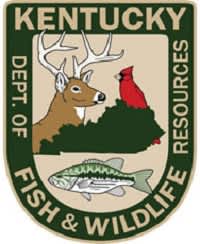Kentucky Fall Squirrel Season Opens Aug. 17

Kentucky’s fall squirrel season is a 196-day split season that kicks off the calendar of fall hunting.
The first segment of the fall squirrel season opens Aug. 17 season closes on Nov. 8. The season opens again Nov. 11 and runs through Feb. 28, 2014.
The daily bag limit is six squirrels.
“I’m predicting this fall’s squirrel season will be as good as last year, maybe better,” said Ben Robinson, small game biologist for the Kentucky Department of Fish and Wildlife Resources. “In the limited time I’ve been afield, it looks like we’re going to have a good mast year.”
There’s a close relationship between a year’s nut production and the following year’s squirrel population levels. Last fall’s mast survey rated white oak and hickory nut production as average, red oak as good and the beech nut crop failed.
“I’ve heard that beech trees in eastern Kentucky are loaded with nuts this year,” said Robinson.
The department’s annual mast survey, held since 1953, begins on Aug. 15 and runs through Sept. 1.
Biologists survey the foods that are most important to Kentucky’s forest wildlife such as squirrels, white-tailed deer, wild turkeys and bear. They walk the same route every year and estimate the year’s mast crop based on what they observe.
“After this information is compiled we’ll have a clearer picture of the year’s mast crop and the likely impact on wildlife populations,” said Robinson.
Weather extremes, such as late frosts and heavy rains in spring and summer droughts, can limit the amount and quality of mast.
Hickory nuts begin to mature in August and acorns and beechnuts in September and October. Late winter is the time when food availability becomes most critical to squirrels and can impact their body condition heading into the breeding season.
Squirrel hunters can help management efforts by taking part in the Squirrel Hunting Cooperator Survey. The voluntary program, which started in 1995, supplies information that biologists use to monitor squirrel population trends in Kentucky.
Hunters record information about their hunts as the season progresses, including the county hunted, hours spent afield along with the number and species of squirrels seen and harvested. Hunters also document how many hunters were in the party and the number of dogs used to find squirrels.
When hunters are finished hunting for the season they simply mail in their survey. Logs are available online at fw.ky.gov by clicking on the Hunting, Trapping & Wildlife tab or by calling 1-800- 858-1549. Logs must be returned to Kentucky Fish and Wildlife no later than May 31, 2014.
Each year, after the survey information is compiled and analyzed, a report is mailed out to squirrel hunters who shared the details of their hunting activities from the previous season.
Last season, the survey detailed 1,123 squirrel hunts in 69 Kentucky counties. Hunters reported they saw 5.5 squirrels per hunt and bagged 1.9 squirrels per hour.
Hunter effort was greater towards the beginning of squirrel season as 69 percent of the hunts took place in August, September and October. About five percent of the squirrel hunts and harvest occurred during both January and February.
Statewide, 81 percent of the harvest was comprised of gray squirrels, suggesting gray squirrels are more abundant. The data also shows Kentucky squirrel hunters prefer to hunt in forests rather than woodlots and fencerows, the habitat where fox squirrels are most often found.
“Over the years both gray and fox squirrel numbers have remained fairly stable,” said Robinson, “with cyclic ups and downs in population based on weather and mast availability.”
This fall, hit the woods and enjoy the hunting that started many down the path of the outdoor life.

